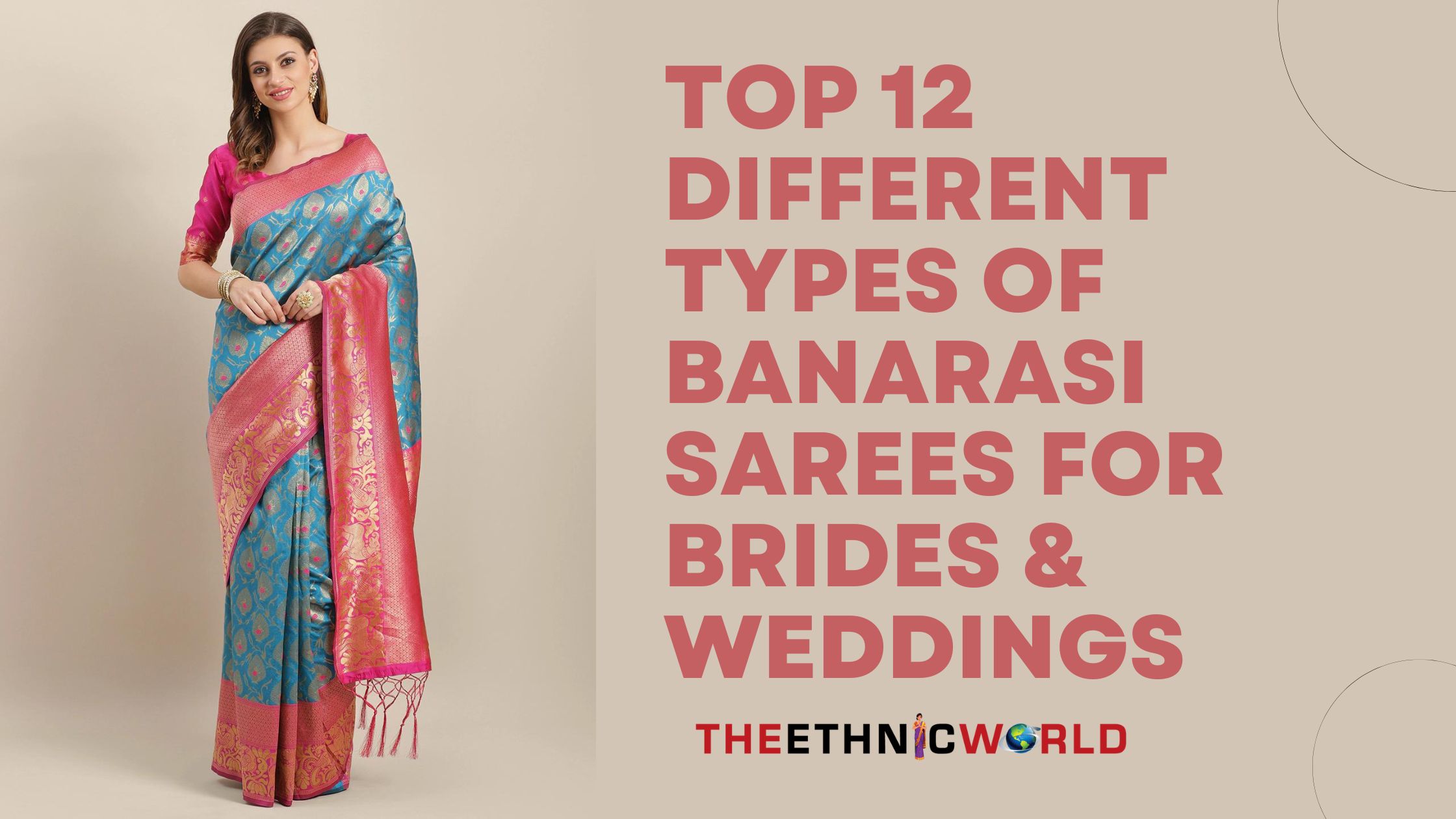Every banarasi saree takes from two weeks to six months to complete. When you have a conversation with a craftsman and watch them work, you will understand their traditional techniques where with gleaming gold threads.
You can still watch this ancient weaving of Banarasi silk sarees in a few silk emporiums in Varanasi. Learn in this article about 12 different banarasi saree types.
Do you know about the amazing Banarasi saree types which are worn by women globally? Different major Banarasi saree types based on origin and styles are Shattir, Katan, Geogette, Shikargarh, Tanchoi, Bhutidar, Cut Work, Jangla, Tissue, Jamdani, Banarasi Silk Shalu, Organza or Kora Saree. Banaras has been an important weaving centre for ages now.
It is believed that Mughal emperor Akbar paved the way for silk-made Banarasi sarees to reach different parts of the country. The weaving techniques have been passed down from generations.
Origin of Banarasi Saree
Historians have managed to find a similar silk work in the Vedic times. The Rig Vedas have mentioned Haryana as the dress worn by Gods.
The description matches what we call a Banarasi saree today; with zari work and motifs.
Banaras has been one of the most crucial locations when it comes to the origins of the Banarasi saree.
Mughal Emperor Akbar had a knack for the luxurious things in life – his gem-encrusted sword and his Turban ornament in floral motifs.
Akbar had many wives who used to drape themselves in rich silk sarees with zari work. This gave form to what we call today Banarasi silk sarees.
As years passed by, several small industries started in the different regions creating different types of banarasi georgette sarees wholesale.
Over the years, different patterns, motifs and fabrics were used to recreate the silk Banarasi saree into different styles.
One of the most popular styles today is adding a silver thread work to the whole look. This gives you a royal look which can be a suitable fit for occasions like weddings or a family event. For a more casual look, you can opt for Georgette or Organza.
The Weaving Process
Are you aware of the hard work that goes into creating the intricate designs of these beautiful Banarasi saree types? The zari threads are made when thin metallic strips from the gold alloys are flattened.
These thin strips are woven around silk yarns. The strips are flattened through a machine. A brightener is used to increase the shine of the threads.
To make motifs out of these zari threads, the saree is made of silk and dyed in different colours. The colour selection depends on the type of banarasi saree you’re looking for.
Several manufacturing units are shifting from chemical dyes to natural dyes.
Beforehand-crafting the beautiful saree, the designs are made on paper. The patterns are punched just like Braille. A different pattern guide with several rows and columns are created for every saree.
You can call this pattern guide a ‘Patra’. It is because of a Patra that several unique motif styles, jali work and such are created.
The Patras pave the way for the further process. The dyed silk and zari threads go into the handloom to create those amazing patterns.
Banarasi sarees are often expensive because of the efforts required to make those patterns perfectly. Even though power looms have replaced handlooms, there are several craftsmen and artisans who craft the wholesale mysore silk sarees with their hands.
While power looms may reduce the production time, they are not able to match the quality standards. Many people still go and search for a craftsman to create their banarasi saree the old traditional way.
Significance Of Banarasi Sarees
Banarasi Sarees are generally woven on a handloom utilizing only the best nature of Silk and Zari. Making one Banarasi saree takes about at least 18 days to as long as a half year, contingent upon the example.
It is no mean errand to make these ravishing sarees and thus are estimated weighty. In any case, the outcome is a dazzling saree which assumes a unique position in your closet and keeps going forever to be passed on as a family treasure. Such is the forte of these sarees.
Highlights of Banarasi Sarees
- On the off chance that you are going in the roads of Banaras, you are probably going to locate some lovely assortment of Banarasi Sarees which show these highlights:
- Banarasi sarees are motivated by the Mughul period, which is obviously clear from the mind boggling botanical themes of the Bel leaf and the Kalga.
- They have rich fringes which are overwhelmingly made with brilliant Zari
- The external fringe is generally woven with leaves which are in an upstanding position called Jhallar
- You can likewise see all over little themes which make for the subtleties of the saree
- Banarasi sarees are woven so that they show a fabulous metallic impact on the Pallu and the fringes.
Types of Banarasi Sarees You Can Choose From
Banarasi Sarees are most appropriate for weddings, celebrations and ethnic wear. Contingent upon the event, you can choose an appropriate plan going from weighty to unpretentious themes.
The texture likewise assumes a significant part in choosing its reasonableness for the events. Banarasi Wedding Sarees are made with Silk material for a fantastic look, while georgette and chiffon are reasonable for ethnic wear and celebrations.
There are several Banarasi saree types to choose from. You might not be aware of every type since a few of these styles are traditional.
You may follow up with the modern attire more but the Banarasi sarees give you a different look. The sarees are designed in such a manner that gives you that high look. They are expensive but are worth the purchase.
Shattir
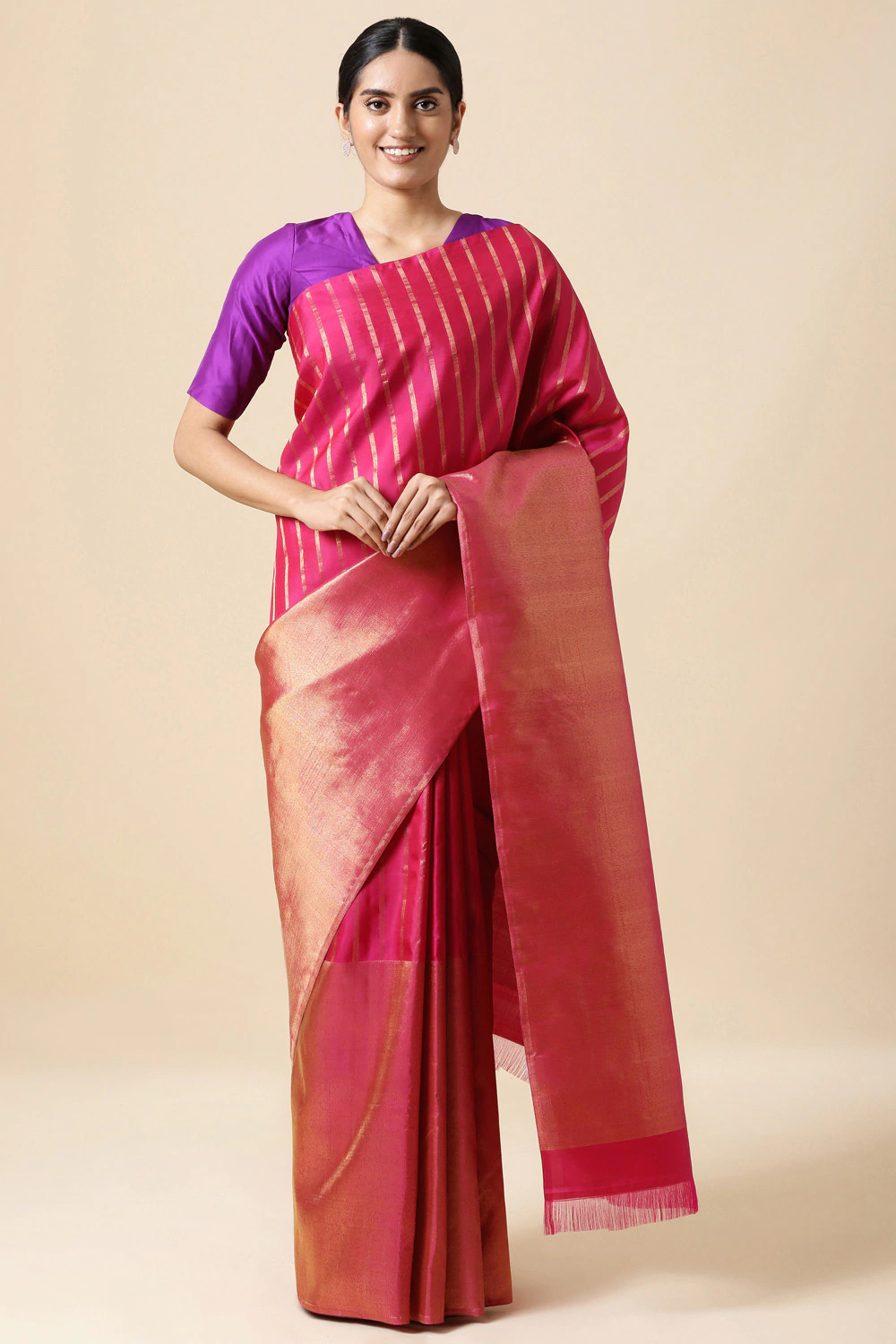
If you are looking for a Banarasi saree to wear frequently, Shattir gives the perfect look. It is the sole fabric used to create contemporary and exclusive designs.
When you look at Shattir, you can easily recognize that the Banarasi saree is made over Shattir. It is light-weight, fashionable and gives you a more casual look.
The fabric used gives your saree a more contemporary look with such designs. Besides, it is an affordable option for wearing a banarasi saree. You can wear it on your regular days since it is an exclusive and modern option for banarasi sarees.
Katan
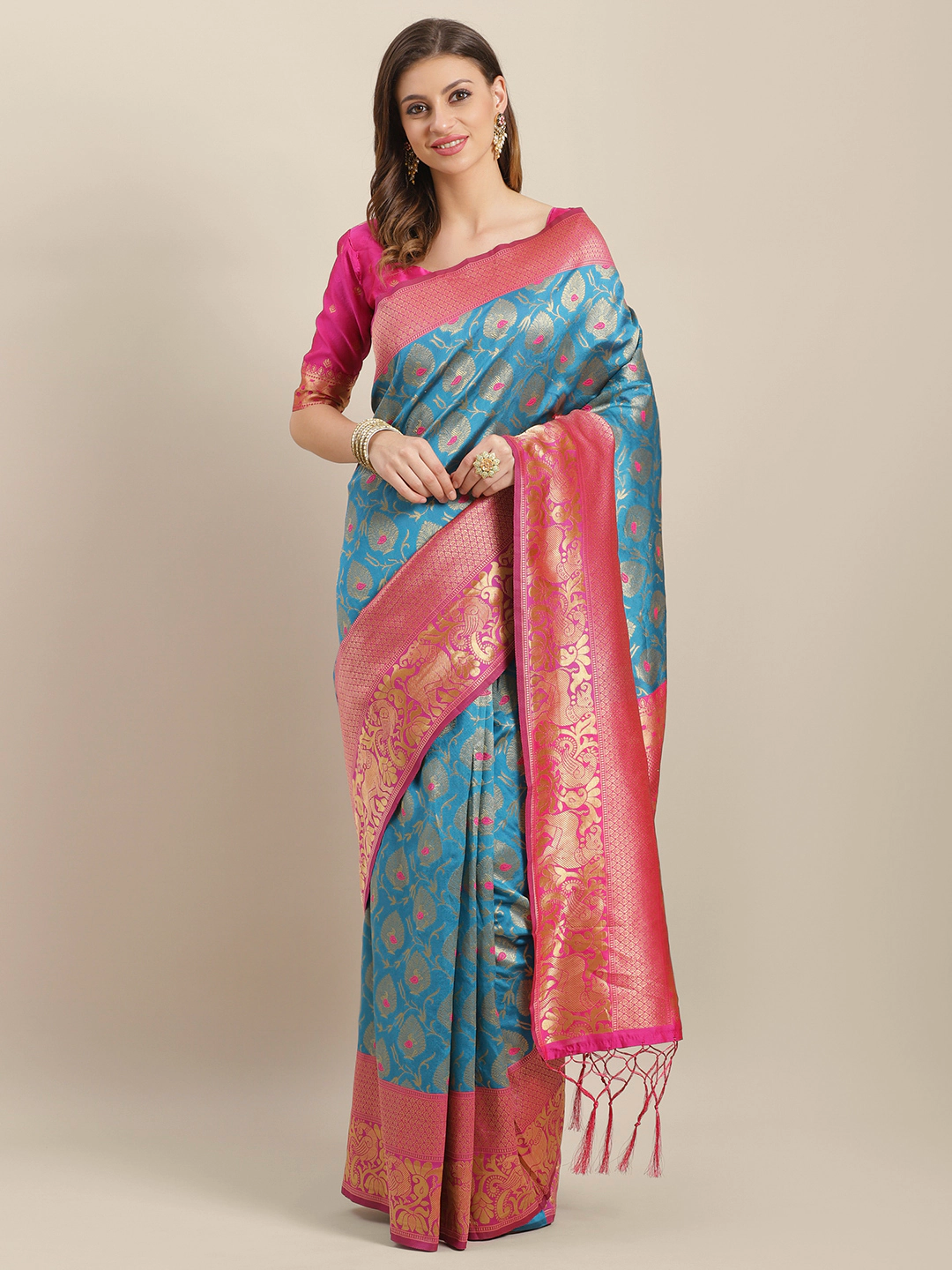
When you need a banarasi saree for a special occasion, you can go with Katan. It is durable, lustrous and comes in some extravagant designs.
The saree is woven with pure silk threads which are twisted and woven smoothly. Katan is a sturdy saree that stays and holds longer.
Since it is primarily a silk saree, it has an exotic lustre and sheen to it. The silk varieties make Katan glamorous and exquisite for weddings or any other occasion.
Traditionally the Katan sarees were woven with handlooms. At present, rapid looms and power looms are used for the weaving process.
Georgette
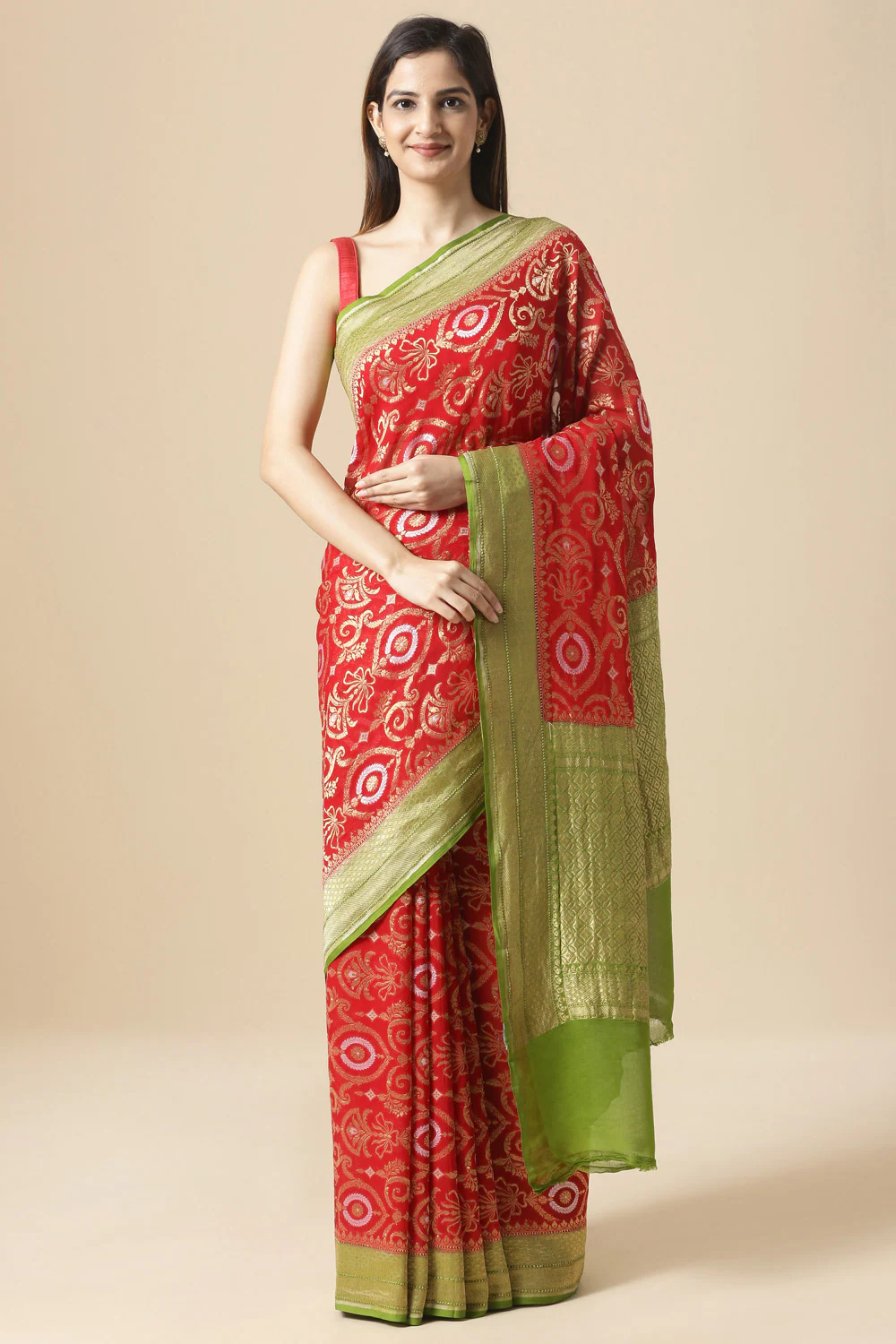
Do you need a light-weight yet glamorous option for every occasion? Georgette sarees are the best fit for you. The fabric used to create Georgette sarees is made from creepy yarn.
S twisted and Z twisted yarns are interwoven which gives it a weft fashion look. These beautiful sarees are counted to be the most distinctive among Banarasi sarees as they are comparatively lighter than Katan or Shattir.
The fine fabrics are woven in contemporary designs that give the saree a fashionable look but feel comfortable while draping.
Shikargarh
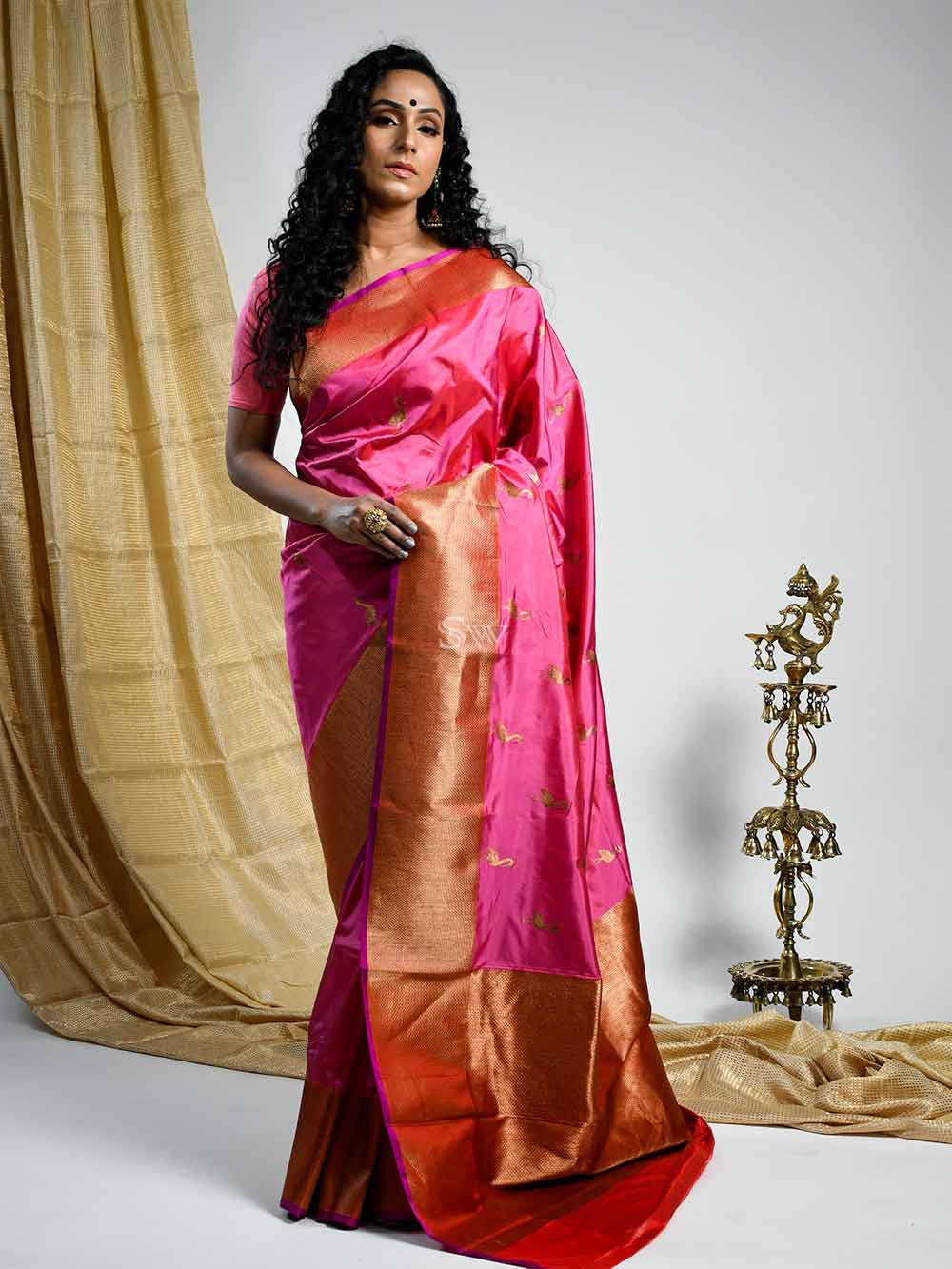
Shikargarh is a Banarasi saree type that has motifs inspired by different elements of nature. These have hunting and animal motifs as the base patterns.
It has Zari work especially at the borders and on the pallu side. When you look at a broader picture, Shikargarh is not considered to be just a Banarasi saree but a form of art in itself. You can buy wholesale sarees online cash on delivery form Theethnicworld at cheap price .
Tanchoi
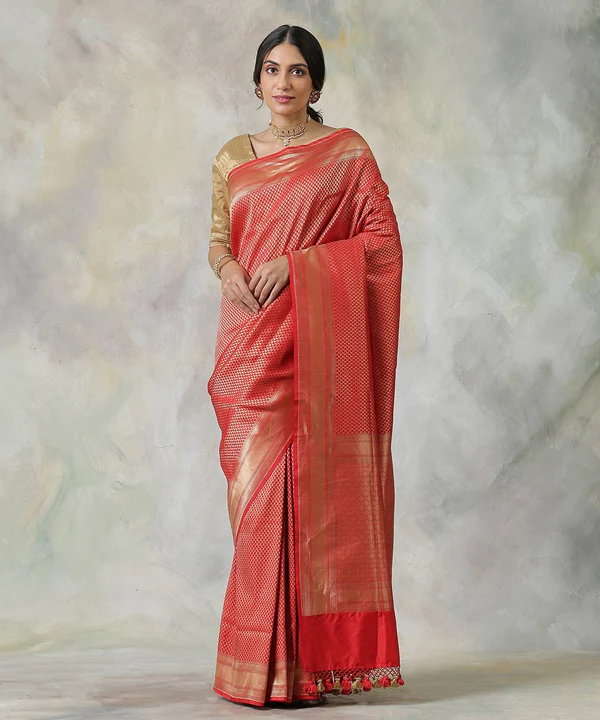
Tanchoi is a Banarasi saree that has beautiful patterns created with colourful silk yarns but does not include any zari work.
They are woven sophistically with Jamawar style paisleys which make the saree light-weight and comfy to carry. Various colourful motifs are added to give the saree an aesthetic look.
Silk gives it a finishing touch to give the saree a glorious look. You will find the borders having a simple design like a criss-cross pattern. This Banarasi saree type is famous especially for the wedding season.
Butidar
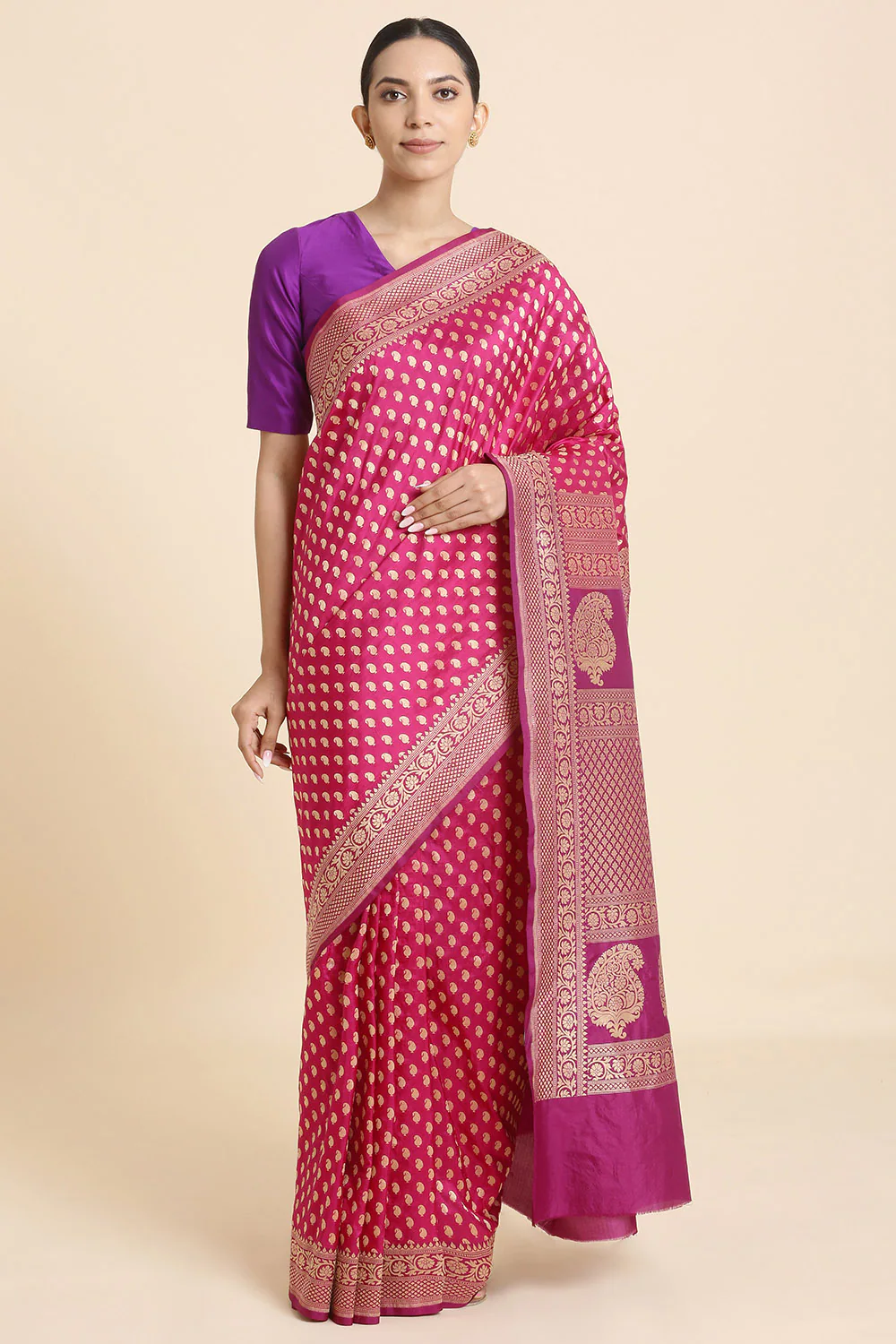
This Banarasi saree type gives a royal look. It is intricately woven with golden and silver shimmer threads along with Silk. The gold brocading gives it a darker look than the silver colour, which gives Butidar another name – The Ganga-Jamuna.
Traditional patterns and motifs give the saree a royal look like Gojar Bail, Jhari Butta, Patti Butti, Thakka Anchal, Baluchar Butta, Angoor Bail and such. These come with floral motifs which are a silk interpretation of the Banarasi sarees without any zari work.
Among the most mainstream and particular among all the kinds of Banarasi sarees, Butidars are otherwise called the amru brocade kimora sarees and come planned with different botanical themes which truth be told loan it its Butidar name.
Initially considered as a less expensive understanding of the more costly khinkhwab, the butidari turns out to be an unadulterated silk translation of the Banarasi sarees with no zari work describing it.
If you are looking for a Banarasi saree that makes you stand out and leave a mark wherever you go, you should try the Butidar saree.
Cut Work Sarees
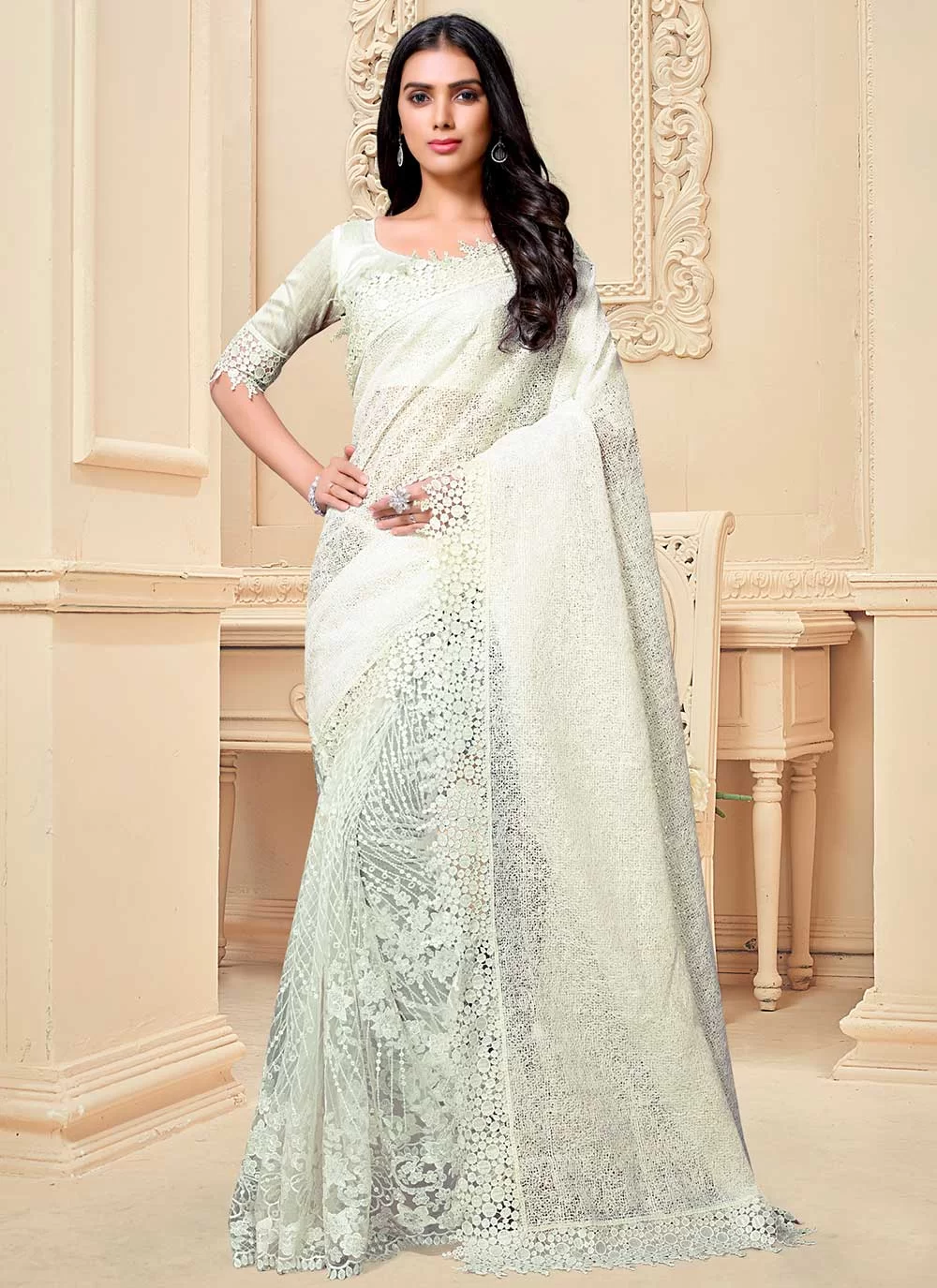
This Banarasi saree type is made with the cut-work technique. It is done on plain fabrics which are textured after removing the floated thread.
It has a pattern that makes it loosely hang between the motifs where the extra thread gets cut off.
These are priced cheaper than the Jamdani sarees. Various warp threads and regular weft is used to fill in the smaller details of these traditional designs.
It generally uses motifs like Marigold, creepers, jasmine flowers and leaves.
With an example that is made to run from selvage to selvage that is permitted to hang freely between the themes before the add
